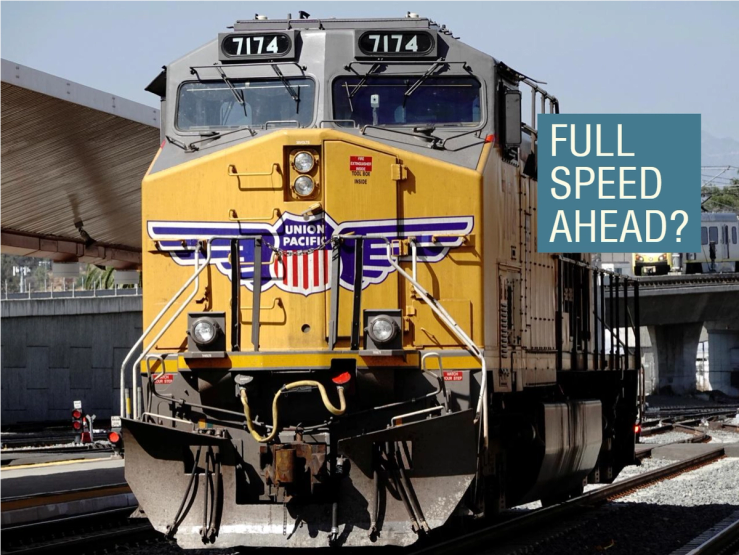The Scoop
Union Pacific, America’s largest publicly traded railroad, is working with investment bankers at Morgan Stanley to explore an acquisition of a rival, according to people familiar with the matter.
Its target couldn’t be learned, but Union Pacific CEO Jim Vena has talked publicly about the virtues of a transcontinental railroad, which would mean combining his western network with one of two East Coast carriers: CSX or Norfolk Southern. Either deal, should Union Pacific move ahead, would be large — CSX is valued at $62 billion, Norfolk Southern at $58 billion — and create the country’s first coast-to-coast carrier.
Morgan Stanley and Union Pacific declined to comment.
Know More
Union Pacific would need multiple regulatory approvals for either acquisition, providing a high-profile test of the Trump administration’s appetite for mergers. The first step would be the blessing of the Surface Transportation Board, whose Republican chair has privately expressed an openness to a transcontinental merger, Semafor reported in June. It would also have to pass muster with the Justice Department, union groups, and President Donald Trump — who has shown an eagerness to insert the government into corporate dealmaking.
After a wave of mergers in the 1980s and 1990s, conventional wisdom suggested that regulators wouldn’t allow “Class I” railroads — Union Pacific, Norfolk, CSX, CPKC and Berkshire Hathaway-owned BNSF — to merge further. (Canadian Pacific merged with Kansas City Southern in 2021, creating a north-south juggernaut but not a bicoastal player.)
But with Trump pushing to increase American industrial competitiveness, industry participants see a window to push deals through. An argument that Union Pacific would likely make, if it does cinch a deal, is that a coast-to-coast railroad will be more competitive against the trucking industry, which still handles more than 70% of domestic freight.


